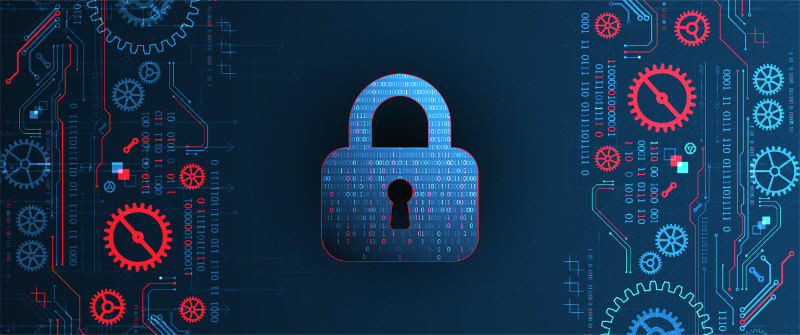What is Immutable Storage and the Benefits?
Protecting valuable data from ransomware attacks is a top priority for businesses and individuals alike. With the rise in cyber threats, it's essential to explore new methods of safeguarding our information. One such solution that has been gaining popularity is immutable storage. In this article, we will examine the world of immutable data storage and how it provides robust protection against ransomware attacks.

What is Immutable Storage?
It refers to a type of data storage that can’t be amended, tampered with, deleted, or changed in any way once the data has been written. This is where immutable storage comes in, basically it’s the same as WORM (Write Once Read Many) whereby the data is “read only”. Where immutable storage differs from WORM is that WORM is based on Tape or Optical storage i.e., Blu-ray, DVDs, or CDs and immutable is based on SSD/HDD drives. Immutable storage works by removing the “write command” from the stored files. When an expiry date is set the “write command” is re-enabled and the data can be overwritten, and this is how immutable backups work. This means that even if a hacker gains access to your files, they cannot alter or delete them.
The benefits of immutable storage
One of the key advantages of using immutable storage is its ability to defend against ransomware attacks. By preventing any modifications to files, even if an attacker gains unauthorised access and attempts to encrypt or delete them, the original copies remain intact and unaffected.
Additionally, immutability helps organisations meet compliance requirements for data retention and integrity. It ensures that critical information remains unaltered and can be securely accessed when needed for audits or legal purposes.
Furthermore, because the storage maintains a history of all changes made to files over time, it enables easy retrieval of previous versions in case of accidental deletions or corruption.
Implementing an immutable solution enhances both security and data governance practices within an organisation.
Stay tuned for more sections on how this technology specifically combats ransomware attacks!
How Does Immutable Storage Work?
Immutable data storage is a powerful tool that helps protect against ransomware attacks by making data unchangeable and inaccessible to unauthorised users. It works by implementing strict write-once, read-many (WORM) policies, which prevent any modifications or deletions once the data has been written. This ensures that data stored within immutable storage is safeguarded against tampering or malicious alterations.
In addition to protecting against ransomware attacks, immutable storage offers several benefits for organisations. First and foremost, it provides an additional layer of protection for critical business data, ensuring its availability even in case of malicious activities. By locking down files, immutable storage prevents even administrators or cybercriminals from making unauthorised changes.
Furthermore, immutable storage allows for long-term retention of important files without worrying about accidental deletions or alterations. This makes it particularly suitable for industries with regulatory compliance requirements such as healthcare and finance.
Moreover, since immutable storage keeps historical versions of files intact indefinitely unless explicitly deleted after their predefined retention period expires, businesses can easily recover from disasters or accidental errors without losing valuable information.
Overall, immutable storage ensures that your organisation's critical data remains safe from destructive ransomware attacks. Its ability to make files unalterable adds an extra layer of security while also offering other benefits such as improved compliance adherence and simplified disaster recovery processes.
The drawbacks of immutable storage
While immutable storage can be an effective tool in protecting against ransomware attacks, it is important to consider its limitations as well. One major drawback is the potential for increased costs. Immutable data storage typically requires additional resources and infrastructure to implement, which can result in added expenses for organisations.
Another limitation of immutability is the potential impact on data accessibility. Once data is made immutable, it cannot be modified or deleted, even by authorised users or administrators. While this ensures that malicious actors cannot tamper with or destroy the data, it also means that legitimate changes or updates may become more challenging.
Additionally, implementing and managing immutable data storage solutions may require specialised knowledge and expertise. Organisations must carefully design their systems to ensure proper retention policies are in place while still allowing necessary access to authorised users.
There might be compatibility issues when integrating existing applications or workflows with new immutable storage systems. It's crucial to thoroughly assess compatibility requirements before implementing such solutions to avoid any disruptions or inefficiencies within your organisation's operations.
Despite these drawbacks, many organisations find the benefits of using immutable storage outweigh these challenges when it comes to safeguarding their critical data from ransomware attacks. By weighing the pros and cons and finding a suitable solution that aligns with specific needs and budget constraints, businesses can enhance their overall security posture against evolving cyber threats.

How does immutable storage protect against ransomware attacks?
Immutable storage is a game-changer when it comes to safeguarding against ransomware attacks. The key lies in its ability to make data unchangeable and unalterable, creating an impenetrable fortress for your valuable information. Immutable storage ensures that your critical files remain safe from unauthorised modifications or deletions.
Unlike traditional storage systems, where files can be modified or deleted, being immutable locks down your data. Once a file is stored in the system, it becomes read-only and cannot be altered by anyone – not even administrators or hackers with malicious intent. This means that if ransomware attempts to encrypt or delete your files, it will fail miserably as they are rendered untouchable, thanks to immutable storage technology.
The beauty of immutable storage lies in its reliance on write-once-read-many (WORM) technology. WORM ensures that once data is written to the system, it becomes set in stone – no modifications are allowed thereafter. It works by implementing strict write-once, read-many (WORM) policies, which prevent any modifications or deletions once the data has been written. Even if attackers gain access to your network and attempt to encrypt or destroy files, their efforts will be futile as the immutable storage feature prevents any changes from being made.
When data is stored in an immutable storage system, it is given a unique identifier and encrypted for added security. The system then assigns a time-based retention period during which the data cannot be altered or deleted. This ensures that even if ransomware manages to infiltrate the network and gain access to sensitive files, they cannot be tampered with.
Immutable storage employs advanced technology such as cryptographic hashes to verify the integrity of each file or object stored within it. These hashes are created using mathematical algorithms that produce unique values based on the content of the file. By regularly verifying these hashes, administrators can detect any unauthorised changes made to the data.
By implementing an immutable solution into your infrastructure, you effectively create a barrier between potential cyber threats and your sensitive data. This added layer of protection acts as a safety net against ransomware attacks because even if malware infiltrates your system and tries to hold your information hostage for payment, the locked-down nature of immutable storage renders their efforts useless.
In this ever-evolving digital landscape where new strains of ransomware continue to emerge at an alarming rate, having an extra line of defence like immutable storage can provide peace of mind knowing that no matter what happens externally, you have taken proactive measures to secure your critical business assets or personal files.
While protecting against ransomware attacks is crucially important these days due to their devastating consequences on businesses and individuals alike, it's equally significant not to rely on one solution but also adopt other security measures such as regularly updating software patches; implementing strong firewalls; training employees about phishing emails and suspicious links; and performing regular backups of your data.
What is ransomware?
Ransomware has become one of the most prevalent and devastating forms of cyber attacks in recent years. But what exactly is ransomware? In simple terms, it is a type of malicious software that encrypts your files or locks you out of your computer until a ransom is paid to the attacker.
Ransomware typically enters a system through phishing emails, infected websites, or by exploiting vulnerabilities in outdated software. Once inside, it quickly spreads throughout the network and starts encrypting files, making them inaccessible to users.
The attackers then demand payment in exchange for providing the decryption key necessary to regain access to the encrypted data. This payment is usually demanded in cryptocurrencies such as Bitcoin, which makes it difficult to trace.
The impact of ransomware attacks can be severe for individuals and businesses alike. It can result in financial loss due to paying the ransom, downtime caused by systems being locked down, compromised confidential information if sensitive data is accessed or stolen during the attack.
To protect against ransomware attacks effectively, it's crucial to have robust security measures in place such as antivirus software with real-time scanning capabilities and regular backups stored securely offsite.
Additionally, educating employees about phishing scams and implementing strong access controls can help prevent successful attacks.
However resilient these protective measures may be; they are not fool proof. That's where immutability comes into play – offering an additional layer of defence against ransomware attacks.
Ransomware Protection
In recent years, ransomware attacks have become a growing concern for individuals and businesses alike. These malicious attacks can lock users out of their own data until a ransom is paid to the hackers.
However, with the advent of immutable storage, there is now an effective solution to protect against such threats.
Immutable data storage works by creating an unchangeable record of every file and storing it in multiple locations. This ensures that even if one copy is compromised, there are still other copies available. Additionally, this technology employs robust encryption protocols to further safeguard your data from unauthorised access.
The benefits of immutability extend beyond just protection against ransomware attacks. It also provides peace of mind knowing that your valuable information remains intact and tamper-proof over time. Moreover, it helps meet compliance requirements as some industries require long-term preservation and immutability of certain types of data.
While immutability does offer significant protection against ransomware attacks, it's important to note its limitations too. Some forms of malware can still encrypt files within the system before they are written into the storage. Therefore, implementing additional security measures like regular backups and comprehensive cybersecurity practices is crucial for complete protection.

Other Ways to Protect Against Ransomware Attacks
While immutable storage is an effective solution for protecting against ransomware attacks, it’s important to remember that it should not be the sole defence strategy. There are additional measures you can take to further enhance your protection against these malicious threats.
- Keep Software and Systems Updated
Software vulnerabilities are often exploited by ransomware attackers. Regularly installing updates and patches helps close potential loopholes, reducing the risk of exploitation. - Implement Strong Security Tools
Using firewalls, antivirus software, and endpoint detection tools is crucial for detecting and blocking suspicious activities before they infiltrate your system. These tools act as a frontline defence. - Educate Your Team on Cybersecurity
Phishing emails and social engineering tactics are commonly used by cybercriminals to launch ransomware attacks. Educating yourself and your team about these threats can help you identify and avoid potential risks. - Regularly Back Up Your Data
Offline or offsite backups provide an additional layer of protection. In the event of a successful ransomware attack, having recent backups allows you to restore your files without succumbing to ransom demands. - Conduct Security Audits and Assessments
Regularly evaluating your system’s defences can help identify vulnerabilities before they are exploited. Addressing these weaknesses proactively ensures a stronger overall security posture. - Use Multi-Layered Security Measures
No single solution provides foolproof protection against ransomware. Combining immutable storage with the above strategies ensures comprehensive defence against these evolving threats.
By adopting a multi-layered approach, you can significantly reduce your risk and enhance your ability to recover quickly if an attack occurs.
Conclusion
In today's digital landscape, ransomware attacks are a constant threat to organisations of all sizes. With the potential for devastating consequences such as financial loss and reputational damage, it is crucial for businesses to implement effective measures to protect their data.
Immutable storage offers a powerful solution in the fight against ransomware attacks. By making data unchangeable and unalterable, it prevents hackers from encrypting or deleting critical information. This ensures that even if an attack occurs, the organisation can still access its valuable data without having to pay hefty ransoms.
With immutable storage, businesses can rest assured knowing that their data is safe and protected. It provides an extra layer of defence that complements other security measures such as firewalls and antivirus software. By adopting this technology, organisations significantly reduce their vulnerability to ransomware attacks.
Getting started with immutable storage may seem daunting at first, but many cloud service providers offer easy-to-use solutions that integrate seamlessly into existing IT infrastructure. It is important for businesses to assess their needs and choose a provider that best suits their requirements.
However, it is essential to note that while immutable storage provides strong protection against ransomware attacks, it does have some drawbacks. One major drawback is the limited ability to edit or delete stored data once it has been made immutable storage. This means careful consideration must be given before implementing this technology in order not to hinder legitimate operations or compliance requirements.
It's also worth mentioning that while immutable storage serves as a crucial tool in combating ransomware attacks, it should not be seen as a standalone solution. Businesses should adopt a multi-layered approach by combining immutable storage with other security practices such as regular backups, user education on phishing threats, network segmentation, and timely patching of vulnerabilities.
In conclusion, the battle against ransomware continues unabated as attackers become more sophisticated each day.
However, by embracing technologies like immutable storage alongside robust cybersecurity strategies, businesses can greatly enhance their resilience against ransomware and protect their valuable data from falling into the wrong hands.
If you would like to know more about the immutable storage solutions we provide please contact us using the details below.
